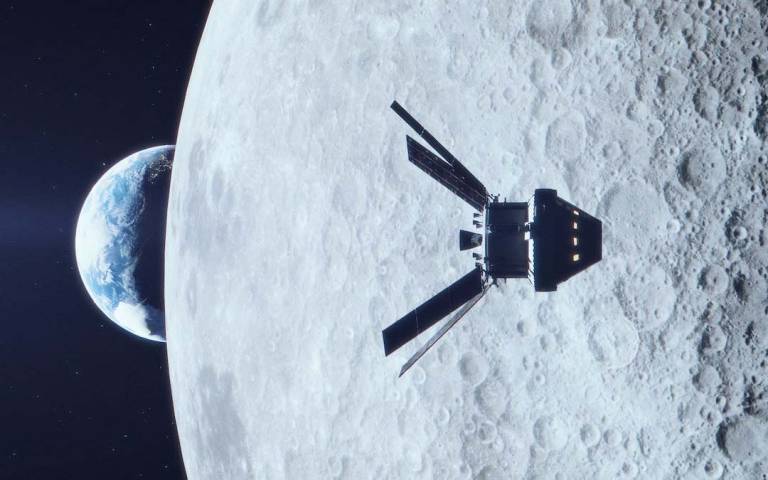UCL researchers are helping NASA prepare for its Artemis programme moon missions by creating high-resolution 3D models of potential landing sites.

The first phase of NASA's Artemis mission, an uncrewed test flight around the moon, was scheduled to launch this Monday (29 August 2022). The third phase, scheduled for 2025, will see humans land on the moon for the first time in more than 50 years.
Professor Jan-Peter Muller and PhD student Alfiah Putri (both UCL Mullard Space Science Laboratory) were commissioned by NASA's Jet Propulsion Laboratory (JPL) to create a 3D model and image of a possible landing site known as Aristarchus - a crater 40km wide and nearly 2.7km deep that was originally selected as the landing site for the cancelled Apollo 18 mission.
The team used a photogrammetry technique they pioneered to derive a detailed 3D model, at a resolution of one metre, from a series of 14 stereo images (where pictures are taken of the same scene at slightly different angles).
Professor Muller said: "Better quality maps and models of the moon's surface are important to minimise risks and maximise the safety of astronauts. Our techniques, developed over decades, provide the most accurate images and models currently possible. These can help inform decisions about landing sites as well as navigation routes for rovers or manned vehicles."
Importantly for future moon mapping, Professor Muller and research associate Yu Tao (also UCL Mullard Space Science Laboratory) have developed a new method which eliminates the need for high resolution stereo images which are rare on the moon. This method uses machine learning to predict 3D shapes after training with nearly 400 pairs of images and their corresponding stereo-derived 3D models created by NASA's camera team.
Using this new method, the team created a large 3D mosaic covering an area of 260 km x 209 km, processed using machine learning from 370 images of the von Kármán crater on the far side of the Moon (the crater is 180km in diameter and up to 12 km deep). The MSSL team produced a technical report analysing the images and 3D model in detail.






